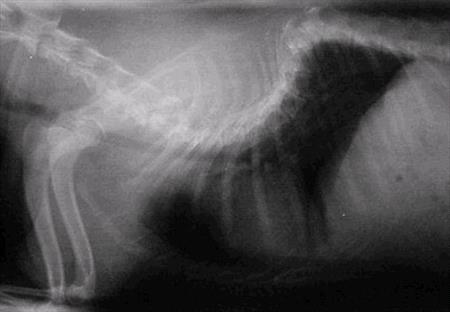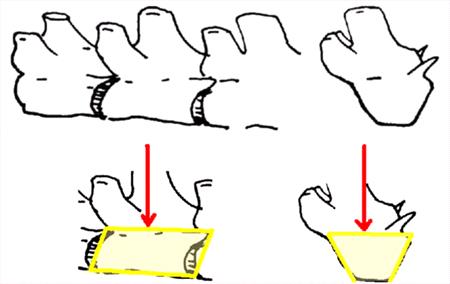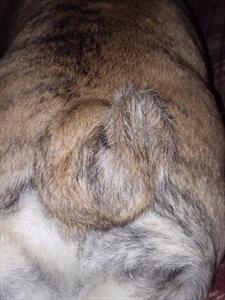(Also called Butterfly Vertebrae)
hemivertebra x-ray

Photo of hemivertebra courtesy of MarVistaVet
Backbones, more technically called vertebrae, make up the vertebral column and consist of small block-like bones joined by spongy discs. They support the skeleton and protect the spinal cord. A hemivertebra is a congenital (present at birth) condition in which vertebrae are deformed. It occurs when two or more vertebral bodies (the block-like portion of the vertebrae) fuse and develop asymmetrically, creating a wedging effect in what should be a fairly cylindrical block.
Vertabre

The normal vertebrae have cylindrical vertebral bodies that connect like beads on a necklace. The vertebral body of the hemivertebra has not developed symmetrically, leading to a wedge shape. Fitting the hemivertebrae into the spine causes the spine to bend or twist. Graphics courtesy MarVistaVet.
The English Bulldog, French Bulldog, Pug and Boston Terriers are famous for having what is called a "screw tail". The screw tail results from hemivertebrae in the vertebrae of the tail and is characteristic, even desirable, in these breeds.
The mid vertebrae of the tail is not a problem as there is no spinal cord tissue that far down. The result is an interesting-looking tail with a possible risk of a skin fold infection.
Mostly, this is of cosmetic interest; the screw tail is part of what makes a bulldog. The problem is that by selecting hemivertebrae in the tail through breeding, hemivertebrae in more important areas of the spine are also affected. When the hemivertebrae occur higher up in the middle of the back, problems occur with the spinal cord. The wedging effect of the hemivertebrae’s body does not connect normally to the vertebral bodies next to them, and the spine becomes twisted. The spinal cord can actually become compressed as well.
A bulldog's screw tail

Photo courtesy of Christina Thomas-Virnig. PhD
The most common area for problematic hemivertebrae is around the 8th (out of 13) thoracic vertebrae (the upper back). Most of the time, hemivertebrae are incidental findings on an X-ray and are not associated with clinical signs, but should there be abnormal pressure on the spinal cord, the following signs can be seen:
- Weakness of the rear limbs
- Fecal incontinence
- Urinary incontinence
In most cases, signs plateau at age nine months when the vertebrae stop growing.
It is important to understand that usually the presence of hemivertebrae is of no significance and is just an interesting finding on a radiograph. That said, if the hemivertebrae creates enough of an angle in the spine, there will most likely be symptoms. It is also not unusual for a dog with hemivertebrae to have other spinal malformations as well. Testing may be needed to fully assess the condition of the spinal cord. This commonly involves special imaging (myelography, MRI, or CT imaging) to see if the spinal cord is actually compressed by the hemivertebrae.
Rest and possibly corticosteroid injections during flare-ups may be adequate to treat a mild case; more severe cases require surgery. Each case is individual, and a spinal surgeon can perform stabilization.